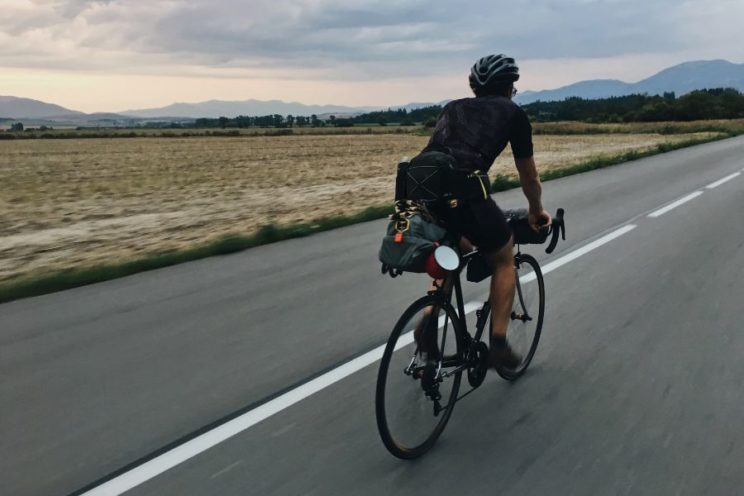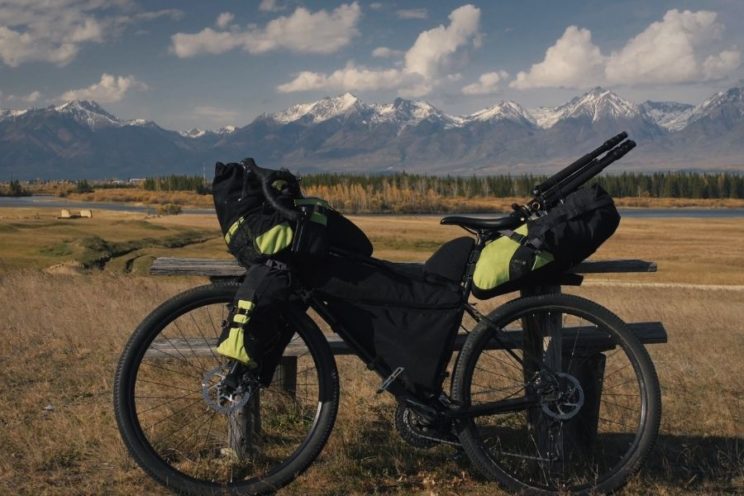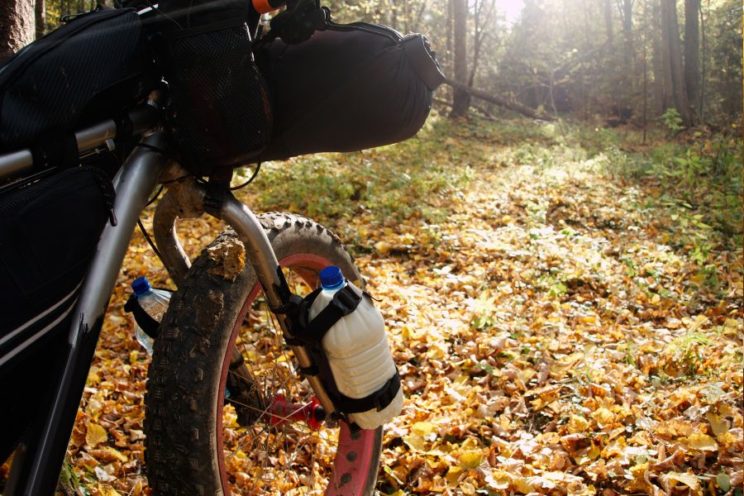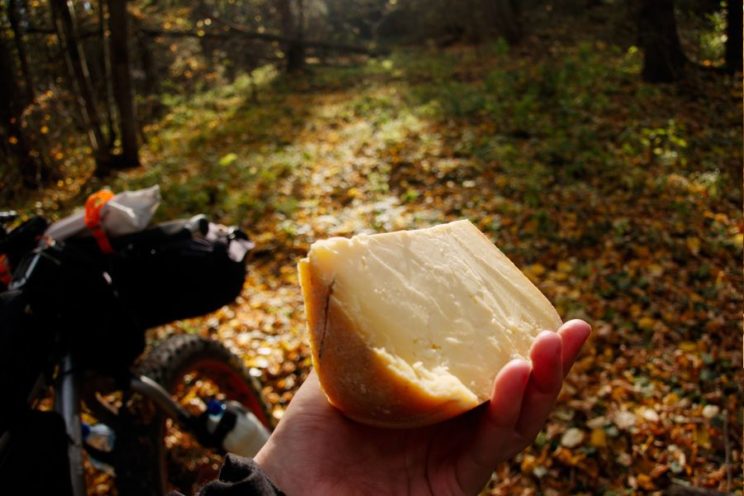He
Bikepacking It is fashionable. We talk about that cycling modality that we associate with bike trips and adventures. Normally, several days and that they need to wear luggage on the bicycle. A way of doing cycling that was born in the United States and Canada, but today is a trend in Europe.
We talk about saddlebag cycling. An experience of several days, and even weeks, that will make you feel an expeditionary. If you are in Spain, you can start by making the Camino de Santiago, the Cido del Cid or the perspirraic. All of them, ideal for bikepacking.
Next, we help you conveniently equip yourself to enjoy your first bikepacking experience.
1. Luggage bags
The key to a bikepacking route is self -sufficient. We must carry everything you need to roll with guarantees for days. This implies having space to wear clothes, tools, food, drink and personal objects.
[Captation id = "Attachment_8204" Align = "Alignnone" Width = "744"]

Image: Tomas Hliva.[/caption]
Bike luggage bags or bags are the most practical option. They allow to download the weight of our body and distribute it better for the bike picture, even for its components. Value install one or several bags or saddlebags of this type. Attending to its location, there are saddlebags of various types:
Highweight holder
They are the typical saddlebags or bags that are tied with ropes or velcros to the carriers, popularly known as transport. It is a large bag reserved for more blunt or heavy objects: a standing pump, tools, kitchen tools, sneakers, mat and even the folded tent.
The idea is to distribute the luggage with the heaviest objects in the back and the lightest in the front.
Sillin saddlebags
They are smaller than the previous ones, although elongated. You can save in it from spare parts (covers, cameras, lubricating liquids or anti -infinctions) to drums or clothing.
Table
Also called
Framebags, its form is narrow so as not to hinder pedaling and save a certain aerodynamics. It is a fundamental saddlebag for small spare parts and tools of the bike, first aid kit (strips, medications, creams, etc.) or personal objects (electronic devices, wallet, keys, etc).
Glovers
Sometimes it is necessary to release space in the front triangle due to the presence of the rear suspension, or the second portabidon. In this case, a good alternative to the picture bag is the famous
glove box. It is small and narrow, and is installed in the front of the upper tube, just before the steering game.
It is a bag reserved for small electronic or personal objects (mobile, mobile, portfolio, etc.).
[Caption id = "Attachment_8210" Align = "Alignnone" Width = "744"]

Image: Ivandan[/caption]
Handlebars
Although it is advisable A showpiece, etc.
Always objects that weigh little and can be folded.
If you are still lost on what type of bikepacking bags choose or what brands are the best, we recommend specialized firms such as Ortlieb, Vaude, XLC or Apidura, which offer all the saddlebag options that we have listed.
2. Accessories: supports (for cyclocomputer, mobile), carriers, GPS, lights ...
In addition to the saddlebags, you must equip your bike with supports and accessories, such as carriers, cyclocomputer, mobile, and also for lighting. Even if you do not plan to pedal at night, it is advisable to always carry lights set for security, even for the day.
3. The bike: what is ideal for bikepacking
At this point it will depend on the type of route. It will also depend on what you have at that time, since for specific trips it will not be necessary to buy a new one, just adapt the one you have.
But if you really want to get fully into bikepacking, a serious bicycle will be the most appropriate. The Grave began to expand around the world almost parallel to bikepacking and currently the offer of models is large and varied, in all price ranges. It is a very versatile bicycle, off -road, light and many of them are prepared to install carriers, bags, and several anchors for carriers in picture or typical. Even in the fork bars.
[Captation Id = "Attachment_8202" Align = "Alignnone" Width = "744"]

Image: Anna_anikina.[/caption]
To choose from, we recommend you with a rigid or semi -rigid bicycle, and it is not necessary to look at carbon options or high performance bicycles. It is more important to have a comfortable bicycle, which has a wide and ergonomic armchair, comfortable supports in the handlebar (such as ergonomic fists or a more fluffy tape) and off -road covers, with a touched roller.
4. Luggage: essential useful
From the hardware or structure of all bikepacking route we pass to its content, the luggage. To form an orderly list and avoid forgetfulness, we advise you to divide it into five parts and call what you already have ready:
Clothes
The choice of your equipment will depend on the area where the route, its climate or the season chosen to make the route is developed. But, in general, you must take, for several days, two garments of the following:
- Maillot
- Culotte.
- Interior shirt.
- Socks.
- Sneakers.
- Gloves (short and long).
Do not forget the helmet, sunglasses (photromatics ideally, for its adaptation to all kinds of conditions), a cap, sleeves, raincoats and jacket. These last three will be advisable to take them even on summer routes. For sudden time changes, storms, etc.
Tools
Here it includes all the necessary spare parts for emergency repairs. Take note:
- Inflate pump (it can be a portable hype to occupy less space).
- Camera.
- Patches
- Dissolution/glue for patches.
- Removable
- Multi tool (Allen keys, torx, screwdriver, etc).
- Antipinhazos liquid (if you carry tubeless).
- TRANCHACADENAS.
- Chain link.
- Chain lubricant.
- Rags or paper.
- Lighter and flanges
Food and drink
You can divide this section into two sub -sections: food and survival drink, and useful for eating. Of entry,
To eat You must include:
- Energy bars.
- Gels
- Fruit.
- Nuts.
- Reserve cans
In general, food of great energy and durable load. For perishable, we recommend you buy them on a day -to -day basis in stores or supermarkets: milk, coffee, cooked ham (pork, turkey), bread, etc. You also have the option of eating in bars or restaurants, even if that character of adventure and typical bikepacking is lost.
[Captation Id = "Attachment_8200" Align = "Alignnone" Width = "744"]

Image: Anna_anikina.[/caption]
Refering to
drink, you must start the route with the following:
- At least two drums (500 or 750 ml) one with water and another with isotonic drink. If they are thermos, much better.
- An extra drum or bottle stored in the rear saddlebag: to cool off, to see, etc.
- Effervecescent pills of isotonic drink.
The
Useful for cooking and keep food in good condition:
- Bag or Fifter with thermal coating for frescoes.
- Stove.
- Small saucepan.
- Gas camping bottle.
- Lighter.
- Covered: holder, spoon, knife or multi -nailed razor.
- Cup or metal glass. Napkins
Bully and toilet
A very important section of your list. The first aid kit must have the following objects:
- Strips.
- Sticking plaster.
- Cream against burns.
- Alcohol.
- Disinfectant.
- Analgesic pills (paracetamol)
It is also very practical to wear personal toilet supplies, such as brush and toothpaste, towels, scarves, sun cream, blades and razor cream, moisturizing creams, etc.
If you are going to make camping, opt for a compact tent and easy installation and a sleeping bag.
Personal items
Finally, personal objects such as the following will save you from many troubles:
- Mobile phone.
- Second emergency mobile (it is also advisable to carry Walkie-Talkie in case you do the group adventure to facilitate communication between you).
- 2 mobile loaders.
- Cycling -up loading cables or lights and loaders if they have.
- Briefcase.
- Cash and credit card.
In addition, to all this you can add safety accessories, such as locks or anti -theft for the bicycle, a flashlight, reflective vest and a thermal blanket, for emergency situations (serious breakdowns, accidents, falls, etc.).
 Image: Tomas Hliva.[/caption]
Bike luggage bags or bags are the most practical option. They allow to download the weight of our body and distribute it better for the bike picture, even for its components. Value install one or several bags or saddlebags of this type. Attending to its location, there are saddlebags of various types:
Image: Tomas Hliva.[/caption]
Bike luggage bags or bags are the most practical option. They allow to download the weight of our body and distribute it better for the bike picture, even for its components. Value install one or several bags or saddlebags of this type. Attending to its location, there are saddlebags of various types:
 Image: Ivandan[/caption]
Image: Ivandan[/caption]
 Image: Anna_anikina.[/caption]
To choose from, we recommend you with a rigid or semi -rigid bicycle, and it is not necessary to look at carbon options or high performance bicycles. It is more important to have a comfortable bicycle, which has a wide and ergonomic armchair, comfortable supports in the handlebar (such as ergonomic fists or a more fluffy tape) and off -road covers, with a touched roller.
Image: Anna_anikina.[/caption]
To choose from, we recommend you with a rigid or semi -rigid bicycle, and it is not necessary to look at carbon options or high performance bicycles. It is more important to have a comfortable bicycle, which has a wide and ergonomic armchair, comfortable supports in the handlebar (such as ergonomic fists or a more fluffy tape) and off -road covers, with a touched roller.
 Image: Anna_anikina.[/caption]
Refering to drink, you must start the route with the following:
Image: Anna_anikina.[/caption]
Refering to drink, you must start the route with the following:












